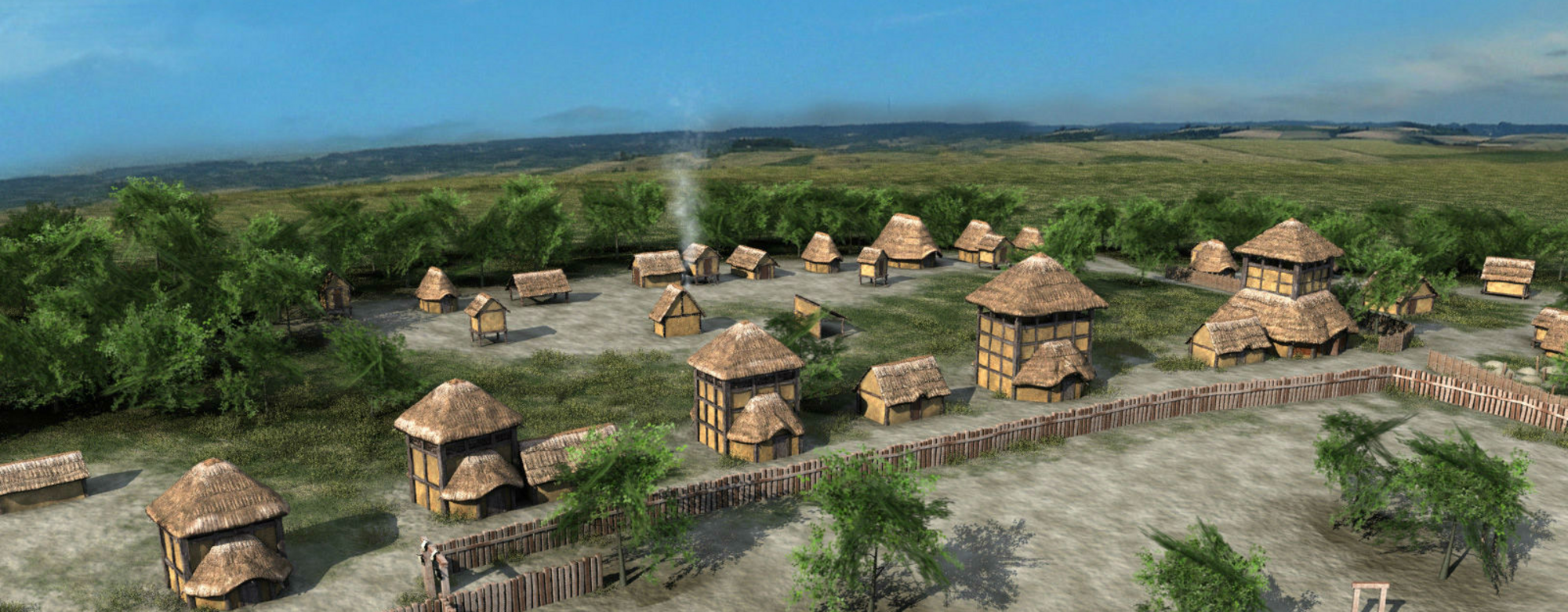
- Home
- The Gallic village
- The story of a Remi village
A large number of villages similar to the one at Acy-Romance were established in about 200 BC in locations with the right topography. Rural settlements, mostly farms, increased in number with some working huge areas of land.
By the end of the 2nd century BC, fortified settlements (oppidum) had been established on the plain (Condé-sur-Suippe and Variscourt in Aisne, La Cheppe in Marne) or at the top of steep hillsides (Vieux-Laon in Aisne, Château-Porcien in Ardennes).
We know very little about the layout of most villages. Acy-Romance is currently the only known example where the spatial and social structure can be studied. Its layout, based around huge courtyards, is repeated throughout the settlement, with the religious centre occupying the summit of the chalky hillock right in the middle.
In recent years, the rare studies of fortified settlements have been brief and superficial. The settlement was organised in large sectors lining streets laid out in a grid. This represents a genuine move towards urbanisation and it was in these large centres that the various powers were concentrated: political, financial and religious.
In 53 BC, Caesar called an assembly of the Gauls at "Durocortorum of the Remi" (B.G. VI, 44), a Gallic city on the site of modern Reims. In recognition of the Remi tribe's indefatigable support for the Roman general throughout the war, the city was to benefit from special status and a period of remarkable expansion after the Conquest.
Associated media
Open Media Library
